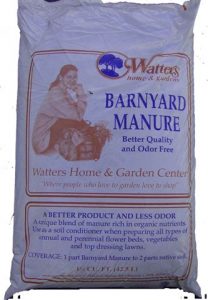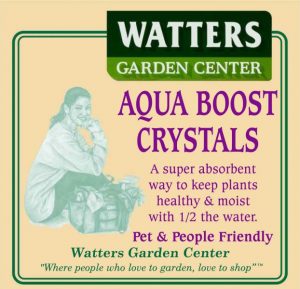January has been so nice that gardens are starting to show color. Some forsythia a winter blooming jasmine are showing their yellow flowers, lilac buds are huge, and fruit trees are starting to show the ‘popcorn’ stage in their bud growth. ‘Popcorn’ stage defines flower buds that have not opened, but definitely are showing their respective colors of apricots or nectarines to come. This also happens to be the time, before they fully break from dormancy, to plant these early bloomers.
Do not frustrate yourself by ordering bare-root plants from an online source only to watch your new plants wither and die. Because ours is an arid, harsh environment, my personal experience has been a 50% mortality rate from bare-root trees, berries, etc. Improve your success rate by planting fully mature plants with an equally mature root structure. These are mature plants that were transplanted into their final growers’ pots in 2013 and then showcased at nurseries in 2015. By planting a tree or shrub that is this mature, you are assured of its successful growth. Transplanted mature plants are better equipped to withstand our spring winds and their deadly drying effects on all new plants. Trust me, I killed a lot of plants over the years until I learned that mature plants really are better than bare-roots.
 Order Online – Trucks started spring deliveries to the garden center this week. In addition to our stock on hand, larger, more mature plants can be ordered online directly from the farm. They are shipped from Monrovia Growers directly to Watters Garden Center, where you can pick up your order.
Order Online – Trucks started spring deliveries to the garden center this week. In addition to our stock on hand, larger, more mature plants can be ordered online directly from the farm. They are shipped from Monrovia Growers directly to Watters Garden Center, where you can pick up your order.
How can you tell if the potted plant you’re planning to buy has a fully mature root structure that is years in the making or if it is a bare-root plant? Try pulling the tree out of its pot. If the trunk lifts out of the soil, you don’t want that plant. If the plant and all the soil come out of the pot then you know you’re dealing with a fully developed root structure. These plants rarely cost but a few dollars over their bare-root counterparts, but ensure an exceptional performance in the garden.
My vegetables are not planted yet, but their seeds are plugged and the garden soil has been turned. My personal gardens are not large. Each is a raised bed measuring 10 feet by 15 feet, supplemented by a lot of container gardens. Where I live the soil is just too hard for growing flowers, vegetables, and herbs directly in the ground, so everything is planted abov e ground. But, I prepare these soils the same way every year and enjoy great gardening success. This is a good opportunity to share how I prepare my gardening soils.
e ground. But, I prepare these soils the same way every year and enjoy great gardening success. This is a good opportunity to share how I prepare my gardening soils.
For those of us that have established gardens that are ready for annual revitalization, here is the complete process. For my 10×15′ foot raised vegetable bed I add 10 bags of ‘Barnyard Manure’ and six bags of ‘Premium Mulch’. This adds up to a two-inch layer of organic matter to be turned into the existing garden soil to one shovel’s depth.
Before turning this organic matter into the garden I like to add some specific nutrients that will be needed for producing edible crops. There are four organics that make the difference in fruit production and flavor:
‘Tomato & Vegetable Food’ 4-4-6 is a locally created organic additive perfect for working into our soils for maximum fruit size and disease resistance. This is a pelletized organic food that is very easy to use. Buy the 20-pound bag so that you have some left over after soil preparation. Some of this reserve is for adding to the garden about every 6-8 weeks throughout the growing season.
‘Gypsum’ is a chalky material generously spread into the garden. For a couple of dollars more you can buy the 40-pound size, also turned into the soil to one shovel’s depth. Focus adding gypsum where your tomatoes, squash, eggplants, and peppers will be planted. This product lowers the pH for better flavor and reduces blossom drop and fruit rot.
‘Worm Castings’ are added to the garden at least twice per year, but are especially important as soil is prepared for spring. A 16-quart bag covered my size garden. The enzymes in the castings activate the organisms in your garden so plants are prompted to root more quickly. Worm castings are critical to native soils and to soils that have not been worked in the past year.
 ‘Aqua Boost Crystals’ are soil polymers that have been infused with mycorrhizae and symbiotic fungi. The polymer crystals hold 200 times their weight in water. They keep moisture close to the plants so vegetable skins show less cracking and stay soft and supple. While lowering water requirements throughout the season by 50 percent, the beneficial mycorrhizae encourage plants to root more deeply. It’s one of those magic new products that really make a difference in our arid climate.
‘Aqua Boost Crystals’ are soil polymers that have been infused with mycorrhizae and symbiotic fungi. The polymer crystals hold 200 times their weight in water. They keep moisture close to the plants so vegetable skins show less cracking and stay soft and supple. While lowering water requirements throughout the season by 50 percent, the beneficial mycorrhizae encourage plants to root more deeply. It’s one of those magic new products that really make a difference in our arid climate.
Along with the barnyard manure and premium mulch turn all four nutrients into the garden soil. Your garden will grow crops as it never has done. Last year my garden produced so many peppers and tomatoes that I literally could not process them fast enough. My pumpkins where so large they had to be rolled out of the garden! I credit my initial soil preparation for such a bountiful success.
Transforming native soils into a viable garden bed can take up to three years before enough compost, manure, and a few other nutrients have been turned into the soil for idyllic fertile proportions. Stick with it and your soil will perform better every year.
Until next week, I’ll see you at the garden center.
Ken Lain can be found throughout the week at Watters Garden Center, 1815 W. Iron Springs Rd in Prescott, or contacted through his web site at WattersGardenCenter.com or Facebook page www.Facebook.com/WattersGardenCenter .


I live in chino valley az, I have had a garden for several years .
When I grow sweet corn I always get grubs or something like that that eat the kernels of corn.
I have tried dusting the ears, and various insecticide to no avail. Do you know what I can do to keep them out of my corn?
Also, last time I grew watermelons they grew nice and midsize, then the ends turned black and I lost all of them, can you help me there?
Thanks for your help
Randy
Grubs are easy to eliminate. We have a beneficial nemetode that wipes out grubs in the garden organically. Without seeing the watermelon, I’m not sure. Did they freeze and turn black, that would certainly cause similar issues.
Watch your manure, grubs are often introduced into the garden through horse manure. Make sure it is well composted first. Watermelon – sounds like blossom end rot. Solve this issue by adding gypsum, also know as calcium sulfate. Very easy fix:)